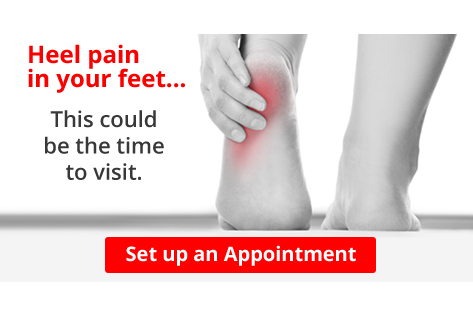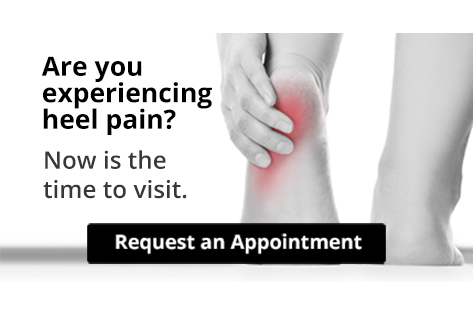June 2018
It's Time for Beautiful Feet
How to Treat Fungus on Your Toes
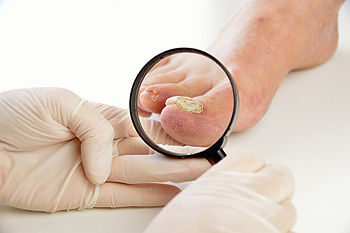 If you aren’t confident with the appearance of your feet, you may be reluctant to show them off. A woman named Nora Presti claims she has an “ugly toenail” and decided to have it checked by two different doctors. Both doctors expressed concern that Presti had a melanoma in her nail. Although tests came back negative, she was able to discover that she has toenail fungus. If you think you may have toenail fungus or are experiencing any symptoms related to toenail fungus, a consultation with a podiatrist is advised.
If you aren’t confident with the appearance of your feet, you may be reluctant to show them off. A woman named Nora Presti claims she has an “ugly toenail” and decided to have it checked by two different doctors. Both doctors expressed concern that Presti had a melanoma in her nail. Although tests came back negative, she was able to discover that she has toenail fungus. If you think you may have toenail fungus or are experiencing any symptoms related to toenail fungus, a consultation with a podiatrist is advised.
If left untreated, toenail fungus may spread to other toenails, skin, or even fingernails. If you suspect you have toenail fungus it is important to seek treatment right away. For more information about treatment, contact one of our podiatrists of University Foot and Ankle Center, L.L.C. Our doctors can provide the care you need to keep you pain-free and on your feet.
Symptoms
- Warped or oddly shaped nails
- Yellowish nails
- Loose/separated nail
- Buildup of bits and pieces of nail fragments under the nail
- Brittle, broken, thickened nail
Treatment
If self-care strategies and over-the-counter medications does not help your fungus, your podiatrist may give you a prescription drug instead. Even if you find relief from your toenail fungus symptoms, you may experience a repeat infection in the future.
Prevention
In order to prevent getting toenail fungus in the future, you should always make sure to wash your feet with soap and water. After washing, it is important to dry your feet thoroughly especially in between the toes. When trimming your toenails, be sure to trim straight across instead of in a rounded shape. It is crucial not to cover up discolored nails with nail polish because that will prevent your nail from being able to “breathe”.
In some cases, surgical procedure may be needed to remove the toenail fungus. Consult with your podiatrist about the best treatment options for your case of toenail fungus.
If you have any questions, please feel free to contact one of our offices located in East Brunswick and Monroe Township, NJ. We offer the newest diagnostic and treatment technologies for all your foot care needs.
Read more about Toenail Fungus
How to Treat Fungus on Your Toes
 If you aren’t confident with the appearance of your feet, you may be reluctant to show them off. A woman named Nora Presti claims she has an “ugly toenail” and decided to have it checked by two different doctors. Both doctors expressed concern that Presti had a melanoma in her nail. Although tests came back negative, she was able to discover that she has toenail fungus. If you think you may have toenail fungus or are experiencing any symptoms related to toenail fungus, a consultation with a podiatrist is advised.
If you aren’t confident with the appearance of your feet, you may be reluctant to show them off. A woman named Nora Presti claims she has an “ugly toenail” and decided to have it checked by two different doctors. Both doctors expressed concern that Presti had a melanoma in her nail. Although tests came back negative, she was able to discover that she has toenail fungus. If you think you may have toenail fungus or are experiencing any symptoms related to toenail fungus, a consultation with a podiatrist is advised.
If left untreated, toenail fungus may spread to other toenails, skin, or even fingernails. If you suspect you have toenail fungus it is important to seek treatment right away. For more information about treatment, contact Genine Befumo, DPM of University Foot and Ankle Center, L.L.C. Our doctor can provide the care you need to keep you pain-free and on your feet.
Symptoms
- Warped or oddly shaped nails
- Yellowish nails
- Loose/separated nail
- Buildup of bits and pieces of nail fragments under the nail
- Brittle, broken, thickened nail
Treatment
If self-care strategies and over-the-counter medications does not help your fungus, your podiatrist may give you a prescription drug instead. Even if you find relief from your toenail fungus symptoms, you may experience a repeat infection in the future.
Prevention
In order to prevent getting toenail fungus in the future, you should always make sure to wash your feet with soap and water. After washing, it is important to dry your feet thoroughly especially in between the toes. When trimming your toenails, be sure to trim straight across instead of in a rounded shape. It is crucial not to cover up discolored nails with nail polish because that will prevent your nail from being able to “breathe”.
In some cases, surgical procedure may be needed to remove the toenail fungus. Consult with your podiatrist about the best treatment options for your case of toenail fungus.
If you have any questions, please feel free to contact our office located in Monroe Township, NJ . We offer the newest diagnostic and treatment technologies for all your foot care needs.
Read more about Toenail Fungus
What is the Achilles Tendon?
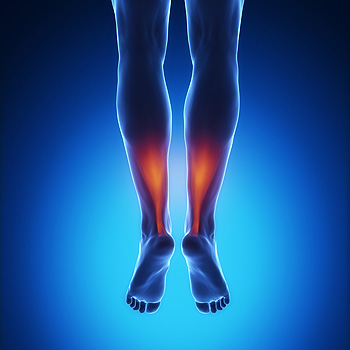 The longest tendon in the body is referred to as the Achilles tendon. Its location lies in the back of the foot and its purpose is to connect the heel bone to the calf. Research has shown that it may become damaged or torn as a result of a sudden injury, and it’s advised to seek treatment as soon as possible. Typical symptoms of an Achilles tendon rupture may include difficulty in standing on tiptoes in addition to bruising and swelling at the point of an injury. In order to obtain a proper diagnosis, a podiatrist may use a method referred to as the Thompson’s test. This involves squeezing the calf muscles while lying face down so movement in the ankle can be observed. For severe tears, surgery may be a necessary option as a permanent solution which may prevent the tendon from re-rupturing. For less severe tears, it may be advantageous to wear a brace or a cast so healing can commence. Please consult with a podiatrist for additional information about Achilles tendon injuries.
The longest tendon in the body is referred to as the Achilles tendon. Its location lies in the back of the foot and its purpose is to connect the heel bone to the calf. Research has shown that it may become damaged or torn as a result of a sudden injury, and it’s advised to seek treatment as soon as possible. Typical symptoms of an Achilles tendon rupture may include difficulty in standing on tiptoes in addition to bruising and swelling at the point of an injury. In order to obtain a proper diagnosis, a podiatrist may use a method referred to as the Thompson’s test. This involves squeezing the calf muscles while lying face down so movement in the ankle can be observed. For severe tears, surgery may be a necessary option as a permanent solution which may prevent the tendon from re-rupturing. For less severe tears, it may be advantageous to wear a brace or a cast so healing can commence. Please consult with a podiatrist for additional information about Achilles tendon injuries.
Achilles tendon injuries need immediate attention to avoid future complications. If you have any concerns, contact one of our podiatrists of University Foot and Ankle Center, L.L.C. Our doctors can provide the care you need to keep you pain-free and on your feet.
What Is the Achilles Tendon?
The Achilles tendon is a tendon that connects the lower leg muscles and calf to the heel of the foot. It is the strongest tendon in the human body and is essential for making movement possible. Because this tendon is such an integral part of the body, any injuries to it can create immense difficulties and should immediately be presented to a doctor.
What Are the symptoms of an Achilles Tendon Injury?
There are various types of injuries that can affect the Achilles tendon. The two most common injuries are Achilles tendinitis and ruptures of the tendon.
Achilles Tendinitis Symptoms
- Inflammation
- Dull to severe pain
- Increased blood flow to the tendon
- Thickening of the tendon
Rupture Symptoms
- Extreme pain and swelling in the foot
- Total immobility
Treatment and Prevention
Achilles tendon injuries are diagnosed by a thorough physical evaluation, which can include an MRI. Treatment involves rest, physical therapy, and in some cases, surgery. However, various preventative measures can be taken to avoid these injuries, such as:
- Thorough stretching of the tendon before and after exercise
- Strengthening exercises like calf raises, squats, leg curls, leg extensions, leg raises, lunges, and leg presses
If you have any questions please feel free to contact one of our offices located in East Brunswick and Monroe Township, NJ. We offer the newest diagnostic tools and technology to treat your foot and ankle needs.
Read more about What are Achilles Tendon InjuriesWhat is the Achilles Tendon?
 The longest tendon in the body is referred to as the Achilles tendon. Its location lies in the back of the foot and its purpose is to connect the heel bone to the calf. Research has shown that it may become damaged or torn as a result of a sudden injury, and it’s advised to seek treatment as soon as possible. Typical symptoms of an Achilles tendon rupture may include difficulty in standing on tiptoes in addition to bruising and swelling at the point of an injury. In order to obtain a proper diagnosis, a podiatrist may use a method referred to as the Thompson’s test. This involves squeezing the calf muscles while lying face down so movement in the ankle can be observed. For severe tears, surgery may be a necessary option as a permanent solution which may prevent the tendon from re-rupturing. For less severe tears, it may be advantageous to wear a brace or a cast so healing can commence. Please consult with a podiatrist for additional information about Achilles tendon injuries.
The longest tendon in the body is referred to as the Achilles tendon. Its location lies in the back of the foot and its purpose is to connect the heel bone to the calf. Research has shown that it may become damaged or torn as a result of a sudden injury, and it’s advised to seek treatment as soon as possible. Typical symptoms of an Achilles tendon rupture may include difficulty in standing on tiptoes in addition to bruising and swelling at the point of an injury. In order to obtain a proper diagnosis, a podiatrist may use a method referred to as the Thompson’s test. This involves squeezing the calf muscles while lying face down so movement in the ankle can be observed. For severe tears, surgery may be a necessary option as a permanent solution which may prevent the tendon from re-rupturing. For less severe tears, it may be advantageous to wear a brace or a cast so healing can commence. Please consult with a podiatrist for additional information about Achilles tendon injuries.
Achilles tendon injuries need immediate attention to avoid future complications. If you have any concerns, contact Genine Befumo, DPM of University Foot and Ankle Center, L.L.C. Our doctor can provide the care you need to keep you pain-free and on your feet.
What Is the Achilles Tendon?
The Achilles tendon is a tendon that connects the lower leg muscles and calf to the heel of the foot. It is the strongest tendon in the human body and is essential for making movement possible. Because this tendon is such an integral part of the body, any injuries to it can create immense difficulties and should immediately be presented to a doctor.
What Are the Symptoms of an Achilles Tendon Injury?
There are various types of injuries that can affect the Achilles tendon. The two most common injuries are Achilles tendinitis and ruptures of the tendon.
Achilles Tendinitis Symptoms
- Inflammation
- Dull to severe pain
- Increased blood flow to the tendon
- Thickening of the tendon
Rupture Symptoms
- Extreme pain and swelling in the foot
- Total immobility
Treatment and Prevention
Achilles tendon injuries are diagnosed by a thorough physical evaluation, which can include an MRI. Treatment involves rest, physical therapy, and in some cases, surgery. However, various preventative measures can be taken to avoid these injuries, such as:
- Thorough stretching of the tendon before and after exercise
- Strengthening exercises like calf raises, squats, leg curls, leg extensions, leg raises, lunges, and leg presses
If you have any questions please feel free to contact our office located in Monroe Township, NJ . We offer the newest diagnostic tools and technology to treat your foot and ankle needs.
Heel Pain Can be Treated!
Heel Pain Can Be Treated!
Symptoms and Causes of Gout
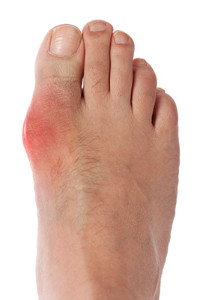 If you are experiencing severe pain in the joints surrounding the big toe, you may have a condition referred to as gout. It’s considered to be a form of arthritis, and the symptoms include redness, swelling, and extreme tenderness. Gout is the result of a buildup of excess uric acid in the body, and typically collects in the joints of the foot. These bouts of pain are typically known as gout attacks, and there may be several reasons for this to develop. The most common theory revolves around the food and drink that is consumed, which typically involves the frequent ingestion of red meat and excess alcohol. Additionally, inherited genetic traits may be a determining factor in the onset of gout. It’s important to consider scheduling a consultation with a podiatrist to learn about proper treatment options for gout.
If you are experiencing severe pain in the joints surrounding the big toe, you may have a condition referred to as gout. It’s considered to be a form of arthritis, and the symptoms include redness, swelling, and extreme tenderness. Gout is the result of a buildup of excess uric acid in the body, and typically collects in the joints of the foot. These bouts of pain are typically known as gout attacks, and there may be several reasons for this to develop. The most common theory revolves around the food and drink that is consumed, which typically involves the frequent ingestion of red meat and excess alcohol. Additionally, inherited genetic traits may be a determining factor in the onset of gout. It’s important to consider scheduling a consultation with a podiatrist to learn about proper treatment options for gout.
Gout is a painful condition that can be treated. If you are seeking treatment, contact one of our podiatrists from University Foot and Ankle Center, L.L.C. Our doctors will treat your foot and ankle needs.
What is Gout?
Gout is a form of arthritis that is characterized by sudden, severe attacks of pain, redness, and tenderness in the joints. The condition usually affects the joint at the base of the big toe. A gout attack can occur at any random time, such as the middle of the night while you are asleep.
Symptoms
- Intense Joint Pain - Usually around the large joint of your big toe, and it most severe within the first four to twelve hours
- Lingering Discomfort - Joint discomfort may last from a few days to a few weeks
- Inflammation and Redness -Affected joints may become swollen, tender, warm and red
- Limited Range of Motion - May experience a decrease in joint mobility
Risk Factors
- Genetics - If family members have gout, you’re more likely to have it
- Medications - Diuretic medications can raise uric acid levels
- Gender/Age - Gout is more common in men until the age of 60. It is believed that estrogen protects women until that point
- Diet - Eating red meat and shellfish increases your risk
- Alcohol - Having more than two alcoholic drinks per day increases your risk
- Obesity - Obese people are at a higher risk for gout
Prior to visiting your podiatrist to receive treatment for gout, there are a few things you should do beforehand. If you have gout you should write down your symptoms--including when they started and how often you experience them, important medical information you may have, and any questions you may have. Writing down these three things will help your podiatrist in assessing your specific situation so that he or she may provide the best route of treatment for you.
If you have any questions, please feel free to contact one of our offices located in East Brunswick and Monroe Township, NJ. We offer the newest diagnostic and treatment technologies for all your foot care needs.
Read more about Everything You Need to Know About GoutSymptoms and Causes of Gout
 If you are experiencing severe pain in the joints surrounding the big toe, you may have a condition referred to as gout. It’s considered to be a form of arthritis, and the symptoms include redness, swelling, and extreme tenderness. Gout is the result of a buildup of excess uric acid in the body, and typically collects in the joints of the foot. These bouts of pain are typically known as gout attacks, and there may be several reasons for this to develop. The most common theory revolves around the food and drink that is consumed, which typically involves the frequent ingestion of red meat and excess alcohol. Additionally, inherited genetic traits may be a determining factor in the onset of gout. It’s important to consider scheduling a consultation with a podiatrist to learn about proper treatment options for gout.
If you are experiencing severe pain in the joints surrounding the big toe, you may have a condition referred to as gout. It’s considered to be a form of arthritis, and the symptoms include redness, swelling, and extreme tenderness. Gout is the result of a buildup of excess uric acid in the body, and typically collects in the joints of the foot. These bouts of pain are typically known as gout attacks, and there may be several reasons for this to develop. The most common theory revolves around the food and drink that is consumed, which typically involves the frequent ingestion of red meat and excess alcohol. Additionally, inherited genetic traits may be a determining factor in the onset of gout. It’s important to consider scheduling a consultation with a podiatrist to learn about proper treatment options for gout.
Gout is a painful condition that can be treated. If you are seeking treatment, contact Genine Befumo, DPM from University Foot and Ankle Center, L.L.C. Our doctor will treat your foot and ankle needs.
What Is Gout?
Gout is a form of arthritis that is characterized by sudden, severe attacks of pain, redness, and tenderness in the joints. The condition usually affects the joint at the base of the big toe. A gout attack can occur at any random time, such as the middle of the night while you are asleep.
Symptoms
- Intense Joint Pain - Usually around the large joint of your big toe, and it most severe within the first four to twelve hours
- Lingering Discomfort - Joint discomfort may last from a few days to a few weeks
- Inflammation and Redness -Affected joints may become swollen, tender, warm and red
- Limited Range of Motion - May experience a decrease in joint mobility
Risk Factors
- Genetics - If family members have gout, you’re more likely to have it
- Medications - Diuretic medications can raise uric acid levels
- Gender/Age - Gout is more common in men until the age of 60. It is believed that estrogen protects women until that point
- Diet - Eating red meat and shellfish increases your risk
- Alcohol - Having more than two alcoholic drinks per day increases your risk
- Obesity - Obese people are at a higher risk for gout
Prior to visiting your podiatrist to receive treatment for gout, there are a few things you should do beforehand. If you have gout you should write down your symptoms--including when they started and how often you experience them, important medical information you may have, and any questions you may have. Writing down these three things will help your podiatrist in assessing your specific situation so that he or she may provide the best route of treatment for you.
If you have any questions, please feel free to contact our office located in Monroe Township, NJ . We offer the newest diagnostic and treatment technologies for all your foot care needs.
Disadvantages of Wearing High Heels
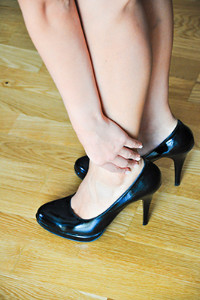 Wearing high heels may possibly be the reason why many women experience foot pain. Despite the fact that most women think high heels flatter the appearance of their legs, several issues may develop as a result of wearing this type of shoe. When high heels are worn, the foot is often in an unnatural position, which may inhibit blood circulation to the feet. The purpose of the Achilles tendon is to connect the calf to the heel. A disadvantage of wearing high heels is that heels may cause this tendon to become stiff and inflamed, possibly resulting in the development of additional foot ailments. Recent research has shown that moderation is the key to wearing high heels, and limiting the number of days they are worn may benefit the overall well-being of the foot. If you experience discomfort and pain from wearing high heels, please consult with a podiatrist to learn about proper stretching techniques for the foot.
Wearing high heels may possibly be the reason why many women experience foot pain. Despite the fact that most women think high heels flatter the appearance of their legs, several issues may develop as a result of wearing this type of shoe. When high heels are worn, the foot is often in an unnatural position, which may inhibit blood circulation to the feet. The purpose of the Achilles tendon is to connect the calf to the heel. A disadvantage of wearing high heels is that heels may cause this tendon to become stiff and inflamed, possibly resulting in the development of additional foot ailments. Recent research has shown that moderation is the key to wearing high heels, and limiting the number of days they are worn may benefit the overall well-being of the foot. If you experience discomfort and pain from wearing high heels, please consult with a podiatrist to learn about proper stretching techniques for the foot.
High heels have a history of causing foot and ankle problems. If you have any concerns about your feet or ankles, contact one of our podiatrists from University Foot and Ankle Center, L.L.C. Our doctors can provide the care you need to keep you pain-free and on your feet.
Effects of High Heels on the Feet
High heels are popular shoes among women because of their many styles and societal appeal. Despite this, high heels can still cause many health problems if worn too frequently.
Which Parts of My Body Will Be Affected by High Heels?
- Ankle Joints
- Achilles Tendon – May shorten and stiffen with prolonged wear
- Balls of the Feet
- Knees – Heels cause the knees to bend constantly, creating stress on them
- Back – They decrease the spine’s ability to absorb shock, which may lead to back pain. The vertebrae of the lower back may compress.
What Kinds of Foot Problems Can Develop from Wearing High Heels?
- Corns
- Calluses
- Hammertoe
- Bunions
- Morton’s Neuroma
- Plantar Fasciitis
How Can I Still Wear High Heels and Maintain Foot Health?
If you want to wear high heeled shoes, make sure that you are not wearing them every day, as this will help prevent long term physical problems. Try wearing thicker heels as opposed to stilettos to distribute weight more evenly across the feet. Always make sure you are wearing the proper shoes for the right occasion, such as sneakers for exercising. If you walk to work, try carrying your heels with you and changing into them once you arrive at work. Adding inserts to your heels can help cushion your feet and absorb shock. Full foot inserts or metatarsal pads are available.
If you have any questions please feel free to contact one of our offices located in East Brunswick and Monroe Township, NJ. We offer the newest diagnostic and treatment technologies for all your foot and ankle needs.
Read more about Effect of High Heels on the FeetBlog Archives
- April 2024
- March 2024
- February 2024
- January 2024
- December 2023
- November 2023
- October 2023
- September 2023
- August 2023
- July 2023
- June 2023
- May 2023
- April 2023
- March 2023
- February 2023
- January 2023
- December 2022
- November 2022
- October 2022
- September 2022
- August 2022
- July 2022
- June 2022
- May 2022
- April 2022
- March 2022
- February 2022
- January 2022
- December 2021
- November 2021
- October 2021
- September 2021
- August 2021
- July 2021
- June 2021
- May 2021
- April 2021
- March 2021
- February 2021
- January 2021
- December 2020
- November 2020
- October 2020
- September 2020
- August 2020
- July 2020
- June 2020
- May 2020
- April 2020
- March 2020
- February 2020
- January 2020
- December 2019
- November 2019
- October 2019
- September 2019
- August 2019
- July 2019
- June 2019
- May 2019
- April 2019
- March 2019
- February 2019
- January 2019
- December 2018
- November 2018
- October 2018
- September 2018
- August 2018
- July 2018
- June 2018
- May 2018
- April 2018
- March 2018
- February 2018
- January 2018
- December 2017
- November 2017
- October 2017
- September 2017
- August 2017
- July 2017
- June 2017
- May 2017
- April 2017
- March 2017
- February 2017
- January 2017
- December 2016
- November 2016
- October 2016
- September 2016
- August 2016
- July 2016
- June 2016
- May 2016
- April 2016
- March 2016
- February 2016
- January 2016
- December 2015
- November 2015
- October 2015
- September 2015
- August 2015
- July 2015
- June 2015
- May 2015
- April 2015
- March 2015
- February 2015
- January 2015
- December 2014
- November 2014
- October 2014
- September 2014
- August 2014
- July 2014


